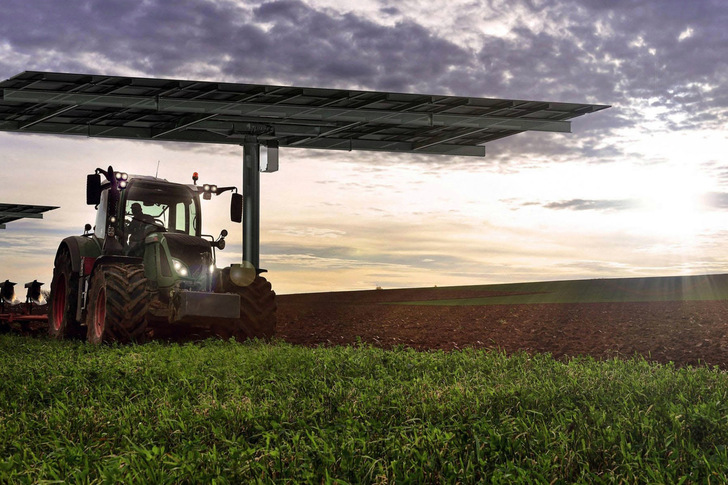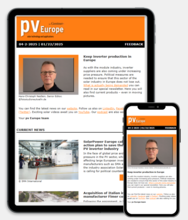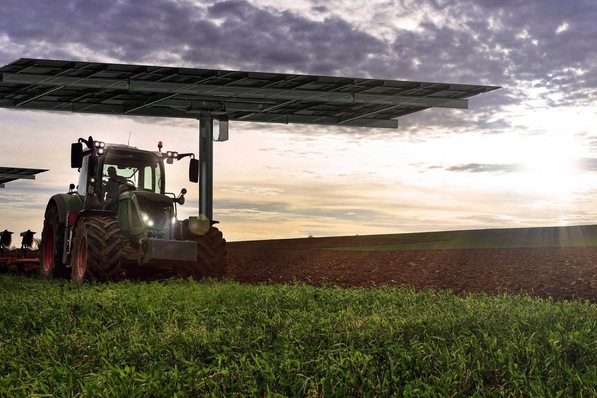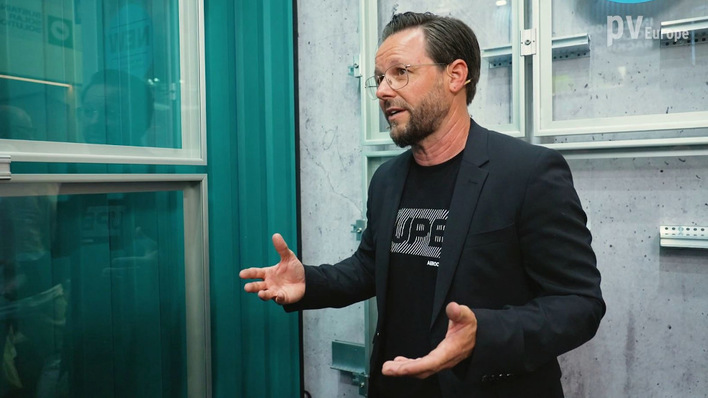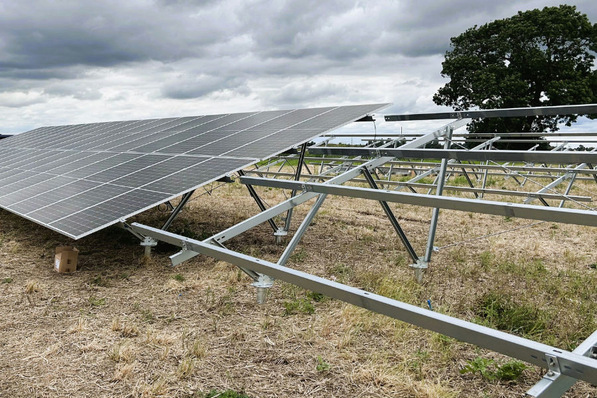Previous agri-PV systems required a specific orientation and composition of the location in order to achieve a good electricity yield. Single-axis tracking systems are more flexible here. The Anywhere Solar system can actually track on two levels: the east-west rotation angle is 360 degrees, and the elevation angle ranges from 0 to 85 degrees. ‘Our trackers always find the sun themselves. This means that the orientation and layout of the installation area are irrelevant,’ explains Martin Lublasser, CEO of Anywhere Solar.
The module surfaces, each measuring around 75 square metres, are anchored to the ground via lightweight foundations. The nominal output per system is up to 19 kilowatts peak. It is also possible to use large agricultural machinery: when the module tables are in a horizontal position, vehicles up to 4.3 metres high can drive underneath them.
Increasing yields
‘We have to use many of our areas for dual purposes in order to achieve our climate targets,’ explains Michael Manfred Fischer. He adds: ‘Anywhere Solar's technology meets the needs of the underlying agriculture as well as current weather conditions.’ A web portal with an integrated calendar function can be used to optimise the shading and irrigation for the plants' growth conditions. The structure can also be used in a targeted manner in the event of extreme weather conditions such as hail or prolonged drought.
See also: Agrosolar Europe and Fibr develop agri-PV system with natural materials
‘In addition to optimising agricultural use, the system also impresses with its solar energy yields: over the course of a year, around 40 per cent more energy is fed into the grid than with rigid systems of a comparable size,’ says Michael Manfred Fischer. The additional yields would mainly occur at the margins of the day. This is more cost-effective for self-consumption, which is particularly high at these times, but can also generate higher yields when selling electricity.
Soil protection
The patented design of the agri-PV systems reduces wind loads. This makes it possible to anchor them in the ground using lightweight foundations. ‘The natural soil is preserved and heavy construction machinery is not required to create the foundations,’ explains Martin Lublasser. The design has been extensively tested and confirmed in the wind tunnel. At the end of their service life, the foundations can be completely removed.
Fischer & Consorten and Anywhere Solar at Intersolar: Hall C4, booth 614.
Can’t make it to The smarter E Europe this year? Then follow our LIVE STREAMS on June 19th and 20th!

